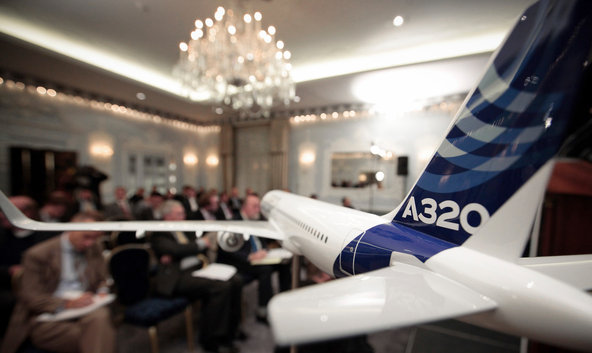TIANJIN, China — When Airbus executives arrived here seven years ago scouting for a location to assemble passenger jets, the broad, flat expanse next to Tianjin Binhai International Airport was a grassy field.
Now, Airbus, the European aerospace giant, has 20 large buildings and is churning out four A320 jetliners a month for mostly Chinese state-controlled carriers. The company also has two new neighbors — a sprawling rocket factory and a helicopter manufacturing complex — both producing for the Chinese military.
The rapid expansion of civilian and military aerospace manufacturing in Tianjin reflects China’s broader ambitions.
As Beijing’s leaders try to find new ways to invest $3 trillion of foreign reserves, the country has been aggressively expanding in industries with strong economic potential. The Chinese government and state-owned companies have already made a major push into financial services and natural resources, acquiring stakes in Morgan Stanley and Blackstone and buying oil and gas fields around the world.
Aerospace represents the latest frontier for China, which is eyeing parts manufacturers, materials producers, leasing businesses, cargo airlines and airport operators. The country now rivals the United States as a market for civilian airliners, which China hopes to start supplying from domestic production. And the new leadership named at the Party Congress in November has publicly emphasized long-range missiles and other aerospace programs in its push for military modernization.
If Boeing’s difficulties with its recently grounded aircraft, the Dreamliner, weigh on the industry, it could create opportunity. Chinese companies, which have plenty of capital, have been welcomed by some American companies as a way to create jobs. Wall Street has been eager, too, at a time when other merger activity has been weak.
Washington is trying to figure out what to do about China’s deal-making broadly. “Many of these transactions raise important security issues for our country,” said Michael R. Wessel, a member of the U.S.-China Economic and Security Review Commission, which was created by Congress to monitor the bilateral relationship. “China’s interest in promoting these investments isn’t necessarily consistent with our own interests, and it’s appropriate to thoroughly examine the transactions.”
In aerospace, the Chinese deal-makers have deep ties to the military, raising additional issues for American regulators. The main contractor for the country’s air force, the state-owned China Aviation Industry Corporation, known as Avic, has set up a private equity fund to purchase companies with so-called dual-use technology that has civilian and military applications, with the goal of investing up to $3 billion. In 2010, Avic acquired the overseas licensing rights for small aircraft made by Epic Aircraft of Bend, Ore., using lightweight yet strong carbon-fiber composites — the same material used for high-performance fighter jets.
Provincial and local government agencies in Shaanxi province, a hub of Chinese military aircraft testing and production, have set up another, similar-sized fund for acquisitions. Last month, a consortium of Chinese investors, including the Shaanxi fund, struck a $4.23 billion deal with the American International Group to buy 80 percent of the International Lease Finance Corporation, which owns the world’s second-largest passenger jet fleet.
“There has always been an obvious cross-fertilization of ideas, expertise and money between the civilian and military,” said Martin Craigs, a longtime aerospace executive in Asia who is now the chairman of the Aerospace Forum Asia, a nonprofit group in Hong Kong. He added that Chinese companies had been actively hiring senior American and European aerospace engineers, so national security concerns could be circumvented by hiring the right people.
The push into aerospace coincides with growing worries in the West and across Asia about China’s increasingly assertive territorial claims, including the dispatch of Chinese warships to waters long patrolled by Japan, the Philippines and Vietnam.
Coincidentally, hours after the A.I.G. deal was announced, two Chinese navy destroyers and two frigates showed up in disputed waters patrolled by Japan. China and Japan have stepped up public criticisms of each other since. And the Obama administration has begun a strategic “pivot,” shifting military forces from the Mideast back to the western Pacific, a move that Chinese officials have criticized as an attempt to contain their country.
Such confrontations in the region are drawing attention to China’s deal-making ambitions.
In October, a $1.79 billion bid by a business linked to Beijing’s municipal government to acquire the corporate jet and propeller plane operations of bankrupt Hawker Beechcraft in Wichita, Kan., fell apart over national security concerns in Washington. Executives found it hard to disentangle the civilian operations from the company’s military contracting business.
Article source: http://www.nytimes.com/2013/01/22/business/global/china-looks-to-aerospace-industry-in-a-bid-for-growth.html?partner=rss&emc=rss
